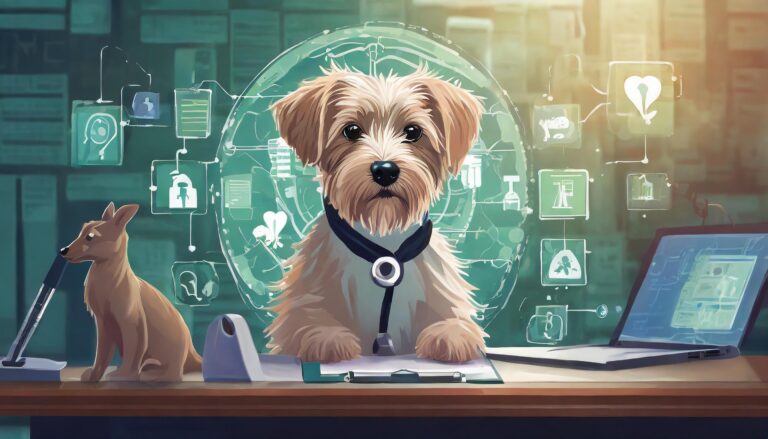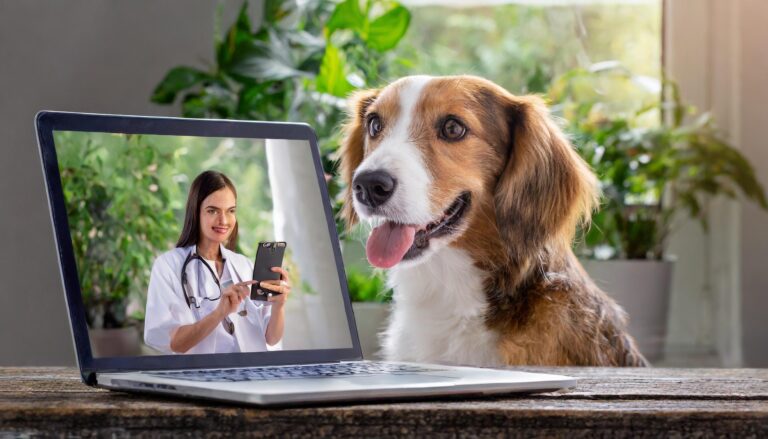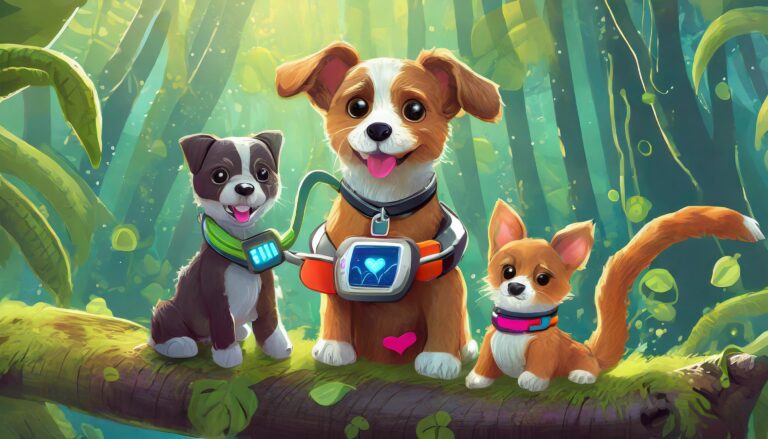Elevate Your Veterinary Practice With Innovation
In the dynamic landscape of veterinary medicine, embracing technological advancements is crucial for enhancing patient care, improving operational efficiency, and ultimately elevating your practice to new heights. In this blog post, we’ll explore a myriad of cutting-edge technologies that can revolutionize the way you manage your veterinary clinic.
Explore New Solutions for Your Veterinary Practice
As the realm of technology continues to evolve, veterinary practices have the opportunity to leverage innovative solutions that streamline operations, enhance workflow, and significantly boost overall productivity. While not every new technology may be an immediate fit for your practice, the potential benefits of greater efficiency make exploring these advancements worthwhile.
Exploring 11 Technologies for Veterinary Practices
1. Practice Information Management Systems (PIMS)
Practice Information Management Systems (PIMS) have evolved into indispensable tools for veterinary practices, offering a comprehensive solution to streamline record-keeping and enhance operational efficiency. These modern systems go beyond basic functionalities, integrating electronic medical records, appointment scheduling, inventory tracking, invoicing, and accounting functions. PIMS platforms not only standardize record-keeping but also contribute to revenue growth by enabling measurement and improvement of business and patient metrics. The integration with diagnostic equipment and other technologies further enhances the overall capabilities, providing a seamless and centralized approach to managing practice information.

2. Telehealth
The responsible adoption of telehealth has become a game-changer in veterinary practices, facilitating improved continuity of care, client compliance, and overall practice efficiency. With various tools available, including video calls, text messaging, and integrated platforms, telehealth enables real-time support and collaboration among veterinary teams. Notably, practices can use existing technologies, such as smartphones and videoconferencing platforms, to provide telehealth services. The benefits extend beyond convenience, allowing practices to charge for their time and expertise, retaining clients who might otherwise seek direct-to-consumer veterinary telehealth options. As practices delve into telehealth, it becomes essential to prioritize secure communication systems and ensure compliance with confidentiality standards.

3. Online Scheduling
In the digital age, clients expect convenience in every aspect, including appointment scheduling. Online veterinary appointment scheduling systems offer a solution that allows animal owners to schedule and modify appointments at their convenience, 24/7. These systems can go a step further by creating waitlists to fill last-minute openings, minimizing revenue loss due to cancellations and no-show appointments. The integration of online scheduling with practice management software (PIMS) and websites maximizes efficiency, reduces phone calls, and enhances the overall client experience. The initial investment in time and money pays off significantly, leading to increased revenue, improved productivity, and better utilization of staff resources.

4. Practice-Associated Online Pharmacies
The concept of having a practice-associated online pharmacy presents a substantial opportunity for veterinary practices. Despite the prevalence of online retailers, some practices have yet to capitalize on this avenue. Third-party vendors can provide prescription management or virtual storefronts, offering clients the convenience they expect while capturing revenues that might otherwise go to external online retailers. The integration of these pharmacies with existing practice systems ensures seamless operations, reduces time spent on prescription verification requests, and enhances overall client satisfaction.

5. Social Media and Marketing
In the digital era, social media has become a critical tool for veterinary practices to attract, retain, and engage clients while fostering a positive reputation. Leveraging various technologies, practices can actively manage and monitor their online presence. Technologies that automate client feedback collection via email or text contribute to proactive engagement, allowing practices to address concerns promptly. Social media management platforms further aid in scheduling and posting content across different networks, saving time and ensuring a consistent online presence. The ability to monitor trends and analyze the impact of marketing efforts provides valuable insights for refining strategies and maximizing their effectiveness.

6. Controlled Drug Management
Effectively tracking controlled substances is a vital aspect of veterinary practice, and technology has introduced solutions to streamline this process. Cloud-based controlled drug tracking platforms offer a secure and efficient method for recording, retrieving, and producing up-to-date information. These platforms minimize manual data entry, stock counts, and reconciliations, ensuring compliance with Drug Enforcement Administration or state reporting requirements. Some platforms even integrate with PIMS, reducing the risk of double entries and enhancing overall accuracy. Features such as GPS tracking of drug activity and smartphone scanning capabilities contribute to a more comprehensive and secure controlled drug management system.

7. Artificial Intelligence for Routine Tasks
Artificial Intelligence (AI) has emerged as a transformative force in veterinary practice, particularly in automating routine tasks. Digital platforms employing AI chat-bots streamline workflows by assisting clients in activities such as appointment booking, answering common queries, and refilling prescriptions. These platforms can also collect patient histories and provide automated responses, saving time for veterinary teams. Another notable application is AI-based dictation software, enabling real-time recording of examination findings, reducing the burden of manual record-keeping. While AI enhances efficiency, it’s crucial for team members to review AI-generated responses to ensure accuracy as the technology continues to evolve.

8. AI for Diagnosis
The potential of Artificial Intelligence (AI) extends to the clinical aspects of veterinary practice, particularly in diagnostics. AI, including machine learning, is being harnessed to detect, delineate, and classify features in radiographs, ultrasounds, CT scans, and MRI images. The ability to recognize patterns and abnormalities in digital data sets significantly enhances diagnostic accuracy. AI applications, such as radiology interpretation software, offer a second opinion and faster turnaround times, contributing to increased efficiency in patient care. However, it’s essential to view AI-based diagnostic tools as supplements to traditional diagnostic workups, understanding their limitations and potential for false-positive or false-negative results.

9. Digital Radiography
Digital radiography represents a transformative leap for veterinary practices still reliant on analog (non-digital) radiography. The advantages of digital radiography, such as instant image acquisition, superior image quality, and seamless integration with electronic medical records, contribute to enhanced productivity and patient care. The elimination of film, chemicals, and darkroom processing streamlines the imaging process, reducing retakes and radiation exposure. Portable digital radiography units further extend these benefits, offering convenience and ease of use in various settings, including field applications. While the initial investment may pose a consideration, the long-term advantages far outweigh the costs for practices committed to embracing technological advancements.

10. 3D Printing
Although not yet widespread, 3D printing, also known as additive manufacturing, holds immense potential in veterinary medicine. The technology has been employed in developing custom prosthetics, orthotics, and implants for animals, revolutionizing the approach to complex surgeries. The ability to create accurate 3D replicas of body parts aids in surgical planning, resulting in shorter surgery times and improved outcomes. The cost-effectiveness, precision, and speed of 3D printing make it a viable option for designing custom products tailored to specific patient needs. Veterinary practices can leverage 3D printing services from specialized companies, eliminating the need for extensive equipment and training while expanding the range of medical-grade applications.

11. Quantified Health Devices
Wearable technologies, synonymous with fitness trackers and smartwatches for humans, have found applications in veterinary medicine. These quantified health or “wearable” devices offer valuable insights into animal health, providing continuous monitoring of vital parameters, activity levels, and specific behaviors. In production medicine, wireless biosensor technology contributes to monitoring herd health by collecting behavioral and physiological data for individual animals. In small animal health, wearable technologies take the form of collars, attachments, or halters, allowing owners and veterinarians to track parameters like ECG activity, sleep habits, and behavior. While these devices present exciting opportunities for individualized care, the industry must address challenges such as accuracy validation and data integration with veterinary practice management software for widespread adoption.

Conclusion
From telehealth to 3D printing, the possibilities for technological innovation in veterinary medicine are vast. Embrace the wave of technological advancement to propel your practice forward, improve patient care, and stay ahead in the ever-evolving field of veterinary medicine.
Whether you are hunting for talent/opportunities; feel free to share your company’s portfolio/resume with your expert headhunters: info@pulivarthigroup.com OR to speak to an expert, schedule a no-obligation call here

